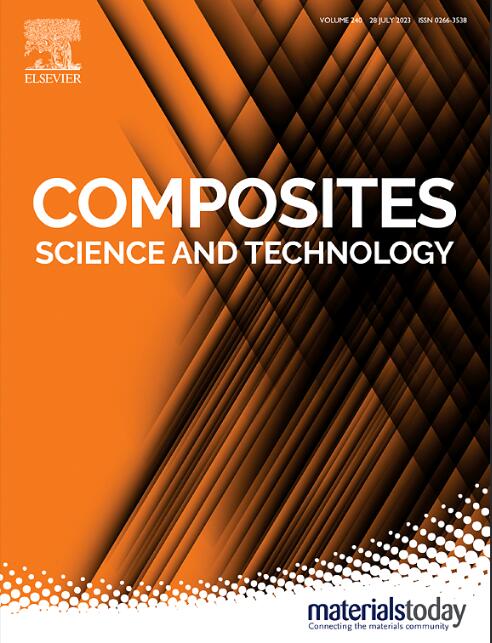Effect of boron nitride on the pyroresistive properties of smart conductive polymer composites: eliminating the negative temperature coefficient effect
IF 8.3
1区 材料科学
Q1 MATERIALS SCIENCE, COMPOSITES
引用次数: 0
Abstract
Self-regulating heating nanocomposites featuring a positive temperature coefficient (PTC) effect offer significant advantages in resistive heating applications due to their intrinsic temperature-controlling ability without external intervention. However, the subsequent negative temperature coefficient (NTC) effect, leading to potential electrical shorting, remains a major challenge. This study explores the impact of a secondary nanofiller, which is electrically insulating yet thermally conductive, in mitigating the NTC effect in smart conductive nanocomposites (CPCs). Through a systematic analysis of morphological changes and filler network formation, we reveal how boron nitride, as a secondary nanofiller, mitigates the NTC effect by reducing electrical contact points between graphene nanoplatelets and increasing viscosity to prevent filler re-agglomeration. The volume ratio between polymer matrix and conductive filler has been identified as a key factor in eliminating the NTC effect in CPCs with 2D fillers. This study provides deep insights into the underlying mechanisms of NTC effect in conductive polymer nanocomposites, with feasible strategies for enhancing the safety and reliability of self-regulating heating composites.

氮化硼对智能导电聚合物复合材料热阻性能的影响:消除负温度系数效应
具有正温度系数(PTC)效应的自调节加热纳米复合材料,由于其内在的温度控制能力而无需外界干预,在电阻加热应用中具有显著的优势。然而,随后的负温度系数(NTC)效应,导致潜在的电短路,仍然是一个主要的挑战。本研究探讨了二次纳米填料在减轻智能导电纳米复合材料(cpc)中NTC效应方面的影响,该填料是电绝缘的,但具有导热性。通过对形态变化和填充物网络形成的系统分析,我们揭示了氮化硼作为二级纳米填充物如何通过减少石墨烯纳米片之间的电接触点和增加粘度来减轻NTC效应,以防止填充物重新团聚。聚合物基体与导电填料的体积比被认为是消除含二维填料的聚氯乙烯中NTC效应的关键因素。本研究深入揭示了导电聚合物纳米复合材料中NTC效应的潜在机制,为提高自调节加热复合材料的安全性和可靠性提供了可行的策略。
本文章由计算机程序翻译,如有差异,请以英文原文为准。
求助全文
约1分钟内获得全文
求助全文
来源期刊

Composites Science and Technology
工程技术-材料科学:复合
CiteScore
16.20
自引率
9.90%
发文量
611
审稿时长
33 days
期刊介绍:
Composites Science and Technology publishes refereed original articles on the fundamental and applied science of engineering composites. The focus of this journal is on polymeric matrix composites with reinforcements/fillers ranging from nano- to macro-scale. CSTE encourages manuscripts reporting unique, innovative contributions to the physics, chemistry, materials science and applied mechanics aspects of advanced composites.
Besides traditional fiber reinforced composites, novel composites with significant potential for engineering applications are encouraged.
 求助内容:
求助内容: 应助结果提醒方式:
应助结果提醒方式:


